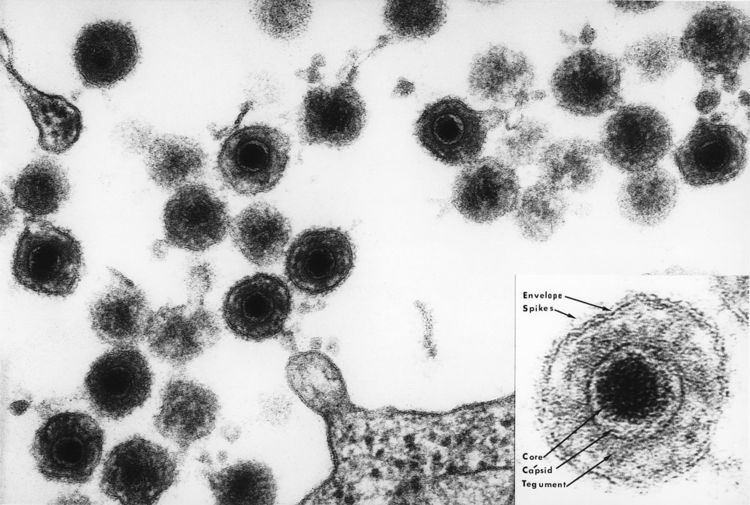Specialty Infectious disease ICD-9-CM 057.8 MedlinePlus 000968 | ICD-10 B08.2 DiseasesDB 5857 | |
 | ||
Synonyms exanthema subitum, roseola infantum, rose rash of infants, sixth disease, baby measles, three-day fever | ||
Roseola is a disease of children, generally under two years old. Although it has been known to occur in eighteen-year-olds, whose manifestations are usually limited to a transient rash ("exanthem") that occurs following a fever of about three days' duration.
Contents
It is caused by two human herpesviruses, human herpesvirus 6 (HHV-6) and human herpesvirus 7 (HHV-7), which are sometimes referred to collectively as Roseolovirus. There are two variants of HHV-6 (HHV-6a and HHV-6b) and studies in the US, Europe, Dubai and Japan have shown that exanthema subitum is caused by HHV-6b. Research has shown that babies can be congenitally infected with HHV-6 via vertical transmission.
Roseola occurs in 1% of children in the United States.
Signs and symptoms
Typically the disease affects a child between six months and two years of age, and begins with a sudden high fever (39–40 °C; 102.2-104 °F). This can cause, in rare cases, febrile convulsions (also known as febrile seizures or "fever fits") due to the sudden rise in body temperature, but in many cases the child appears normal. After a few days the fever subsides, and just as the child appears to be recovering, a red rash appears. This usually begins on the trunk, spreading to the legs and neck. The rash is not itchy and may last 1 to 2 days. In contrast, a child suffering from measles would usually appear more infirm, with symptoms of conjunctivitis, coryza, and a cough, and their rash would affect the face and last for several days. Liver dysfunction can occur in rare cases.
A small percentage of children acquire HHV-6 with few sign or symptoms of the disease. Exanthema subitum occurs in approximately 30% of children during primary HHV-6 infection. Others may show symptoms significant enough that other more serious infections, such as meningitis or measles should be ruled out. In case of febrile seizures, medical advice can be sought for reassurance. However, febrile seizures are not harmful, do not require treatment, and have no long term negative effects unless they last longer than five minutes.
In rare cases, HHV-6 can become active in an adult previously infected during childhood and can show signs of mononucleosis.
Cause
It is caused by two human herpesviruses, human herpesvirus 6 (HHV-6) and human herpesvirus 7 (HHV-7), which are sometimes referred to collectively as Roseolovirus. There are two variants of HHV-6 (HHV-6a and HHV-6b) and studies in the US, Europe, Dubai and Japan have shown that exanthema subitum is caused by HHV-6b. This form of HHV-6 infects over 90% of infants by age 2.
Prevention
There is no specific vaccine against or treatment for exanthema subitum, and most children with the disease are not seriously ill.
Treatment
For HHV-6 infection, no pharmacological treatments have been approved as of June 2012. Although they may be unnecessary for exanthema subitum, the use of cytomegalovirus treatments (valganciclovir, ganciclovir, cidofovir, and foscarnet) have shown some success.
